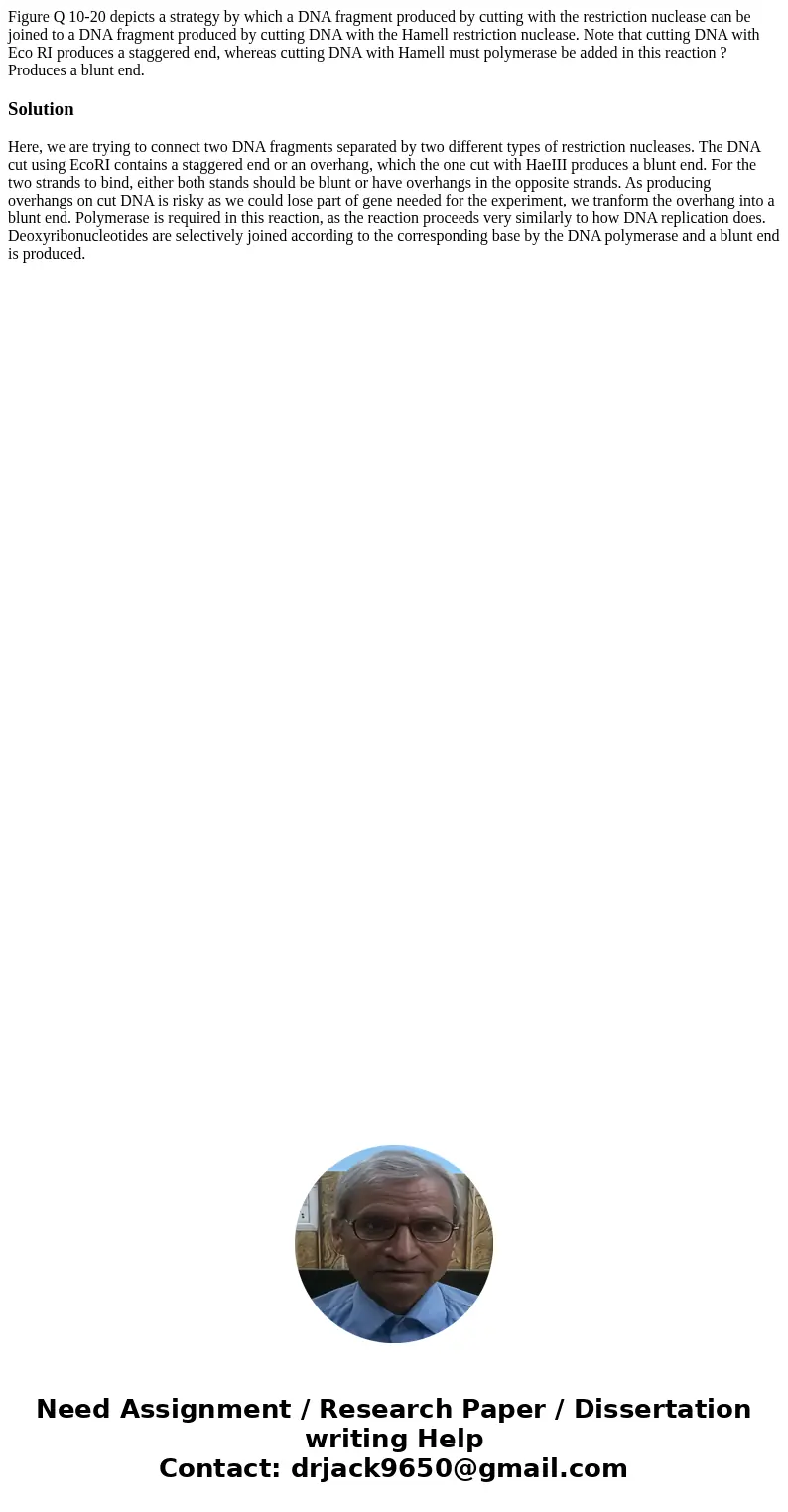Figure Q 1020 depicts a strategy by which a DNA fragment pro
Figure Q 10-20 depicts a strategy by which a DNA fragment produced by cutting with the restriction nuclease can be joined to a DNA fragment produced by cutting DNA with the Hamell restriction nuclease. Note that cutting DNA with Eco RI produces a staggered end, whereas cutting DNA with Hamell must polymerase be added in this reaction ? Produces a blunt end.
Solution
Here, we are trying to connect two DNA fragments separated by two different types of restriction nucleases. The DNA cut using EcoRI contains a staggered end or an overhang, which the one cut with HaeIII produces a blunt end. For the two strands to bind, either both stands should be blunt or have overhangs in the opposite strands. As producing overhangs on cut DNA is risky as we could lose part of gene needed for the experiment, we tranform the overhang into a blunt end. Polymerase is required in this reaction, as the reaction proceeds very similarly to how DNA replication does. Deoxyribonucleotides are selectively joined according to the corresponding base by the DNA polymerase and a blunt end is produced.

 Homework Sourse
Homework Sourse